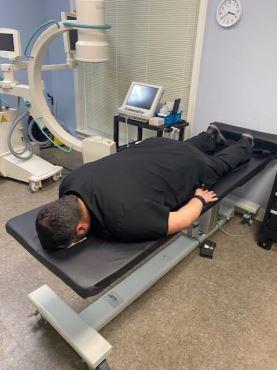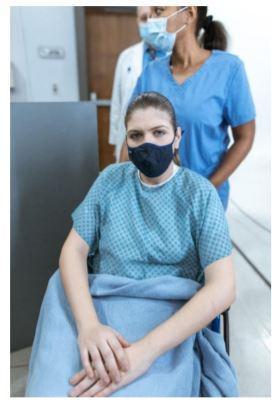Why do some people have nerve pain after ventilation for COVID-19?
Critically ill COVID-19 patients often receive ventilation to relieve ARDS (acute respiratory distress syndrome).
They are placed in the swimmers or prone position. Unfortunately remaining in this position for multiple hours a day, can lead to peripheral nerve injury and pain.

Demonstration of the swimmer’s or prone position.
Common causes of nerve pain
- Lying in the swimmer’s or prone position for 12 to 16 hours a day
- The toxic effects of COVID-19 on the peripheral nerves
Common symptoms of nerve pain
Signs and symptoms vary greatly, depending on the location and severity of the nerve damage.
You may experience some of these:

Location of the pain
You may feel pain anywhere from the:
- shoulder blade to the elbow (ulna nerve)
- upper arm, along triceps, into wrist, fingers, and sensation part of the hand (radial nerve)
- shoulder down the arm, towards the wrist, through the carpal tunnel and into the hand (median nerve)
- spinal cord to the shoulder, arm and hand (brachial plexus)
- lower back, hips, buttocks, legs and both sides of the feet (sciatic nerve)
When to see your doctor?
See your doctor immediately if you have lingering pain, weakness or numbness.
Your doctor will
- do a thorough medical examination to assess and diagnose the damage.
- test the functioning of the nerves.
- find the exact location of the nerve damage.
- determine the severity of the injury.
- identify the most effective treatment
Common treatments
Depending on the location and severity of the nerve pain:
Step 1: Your doctor will relieve pressure and tension on the injured nerve, using the least invasive procedures.
Step 2: Your doctor may prescribe a short-term pain reliever, muscle relaxant, and or anti-inflammatory medication.
Step 3: Your doctor may perform peripheral nerve blocks to help diagnose and treat your condition.
Last resort: If the pain lasts more than 3 months, you might need a surgical solution.
What is the prognosis?
Long-term recovery depends on how severe the nerve injury is. Some nerves can regenerate slowly.
This can take between 12 and 18 months.

